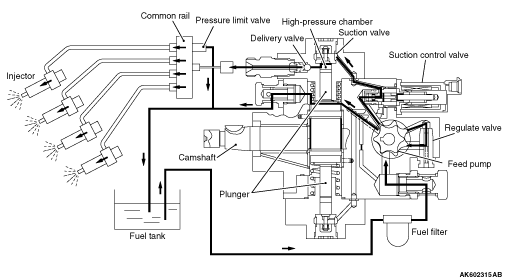
When the amount of actuating current is small, the opening of the suction control valve becomes small, thus reducing the amount of fuel that is delivered to the high-pressure chamber. As a result, the amount of fuel that is pumped to the common rail is reduced.
When the amount of actuating current is large, the opening of the suction control valve becomes large, thus increasing the amount of fuel that is delivered to the high-pressure chamber. As a result, the amount of fuel that is pumped to the common rail is increased.
By varying the amount of actuating current to the solenoid valve in accordance with the running conditions of the engine, the engine-ECU controls the amount of fuel that is delivered to the high-pressure chamber.


